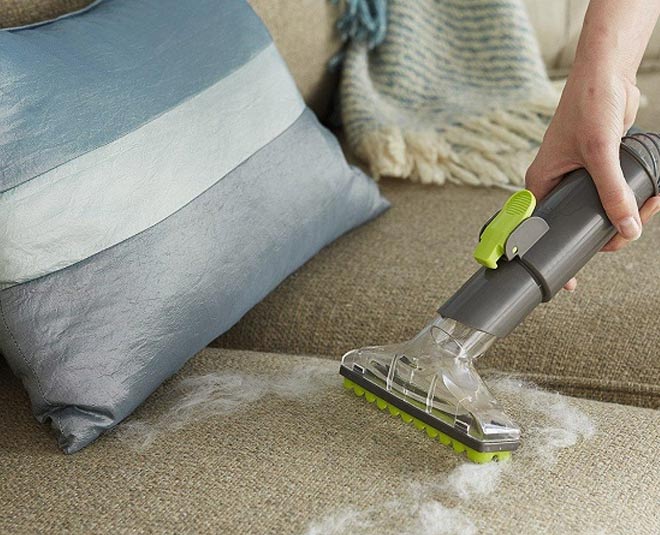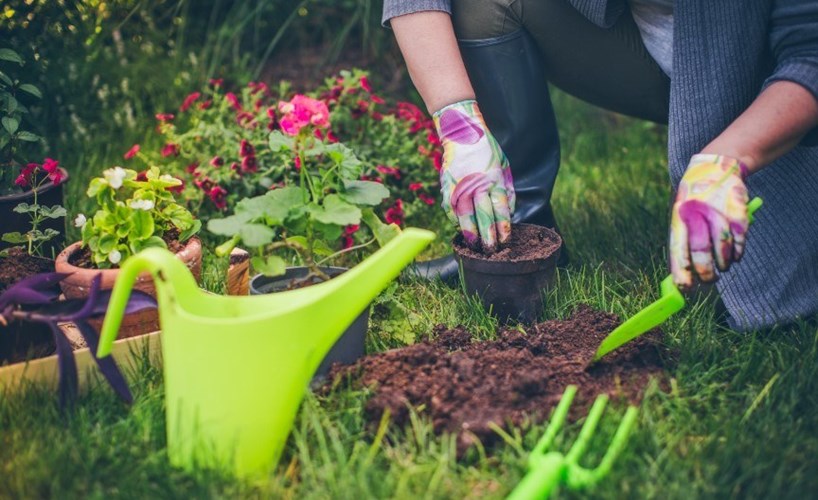
It depends on how we use the couch as it takes a lot of abuse. From eating dinner to watching a movie the couch can capture more body oils, bad odors, airborne dust, and dirt that you can’t imagine! For upholstery, a deep-clean might seem like an impossible challenge: however, we have few tips on the best way to clean upholstery.
Read the label
Before proceeding to clean, it is important to know what kind of fabric is used in the upholstery and what the codes mentioned on it means. Codes generally used on tags include:
W – Indicates that water can be used in cleaning
WS – A dry cleaning detergent, mild detergent, and steam vacuum can be used
X – Don’t use water, use vacuum only
S – Clean with dry cleaner detergent
Start cleaning
Baking soda is great for many things including removal of grime and embedded dirt on your couch. First test the fabric in an inconspicuous area, mostly baking soda is safe for different types of upholstery. You would need a couple of cleaning cloths, a brush, baking soda, and vacuum cleaner using the brush attachment.
Remove crumbs, dust, and other debris
Sprinkle it with baking soda and let it leave for 20 to 30 minutes. You might consider mixing the baking soda in dry carpet cleaner for a deep clean.
Use the brush of vacuum to remove the baking soda
For tough stains that are still present, you can use a solution that will work for every type of fabric plus a clean cloth for blotting away stains. Fabric upholstery can also be cleaned using a mixture of warm water, a cup of vinegar, and one tablespoon of dish soap.
For synthetic upholstery, use a mixture of warm water and a half cup of vinegar with half tablespoon of dish soap, it works well.
When you want a deep clean, consider renting a steam cleaner which can be used on various types of upholstery other than suede.
You can remove cushion covers and the tag says they are machine washable. This is the easiest way to clean couch cushions: otherwise, you can loosen dirt by beating the cushions outdoors on a sunny day. A benefit of doing this is the sun’s UV rays work to disinfect the fabric.
Use Baby Wipes to Clean Furniture
Baby wipes are astonishingly effective for quick upholstery cleaning. Although, you should always test on an inconspicuous area to assure that they won’t damage the fabric. It is great for leather, cotton, and polyester upholstery. These wipes provide a mixture of water and soap that contains very little moisture. Keep a travel pack in the living room for instant spot removal whenever something spills on it. Baby wipes are ideal for spot-cleaning rugs. You need to act quickly on tough stains like coffee drips and other spills so that the stain will be out before it even has time to settle.
Prevent Stains on Upholstered Furniture
If your furniture doesn’t come with a fabric protector to repel stains then apply one by yourself or concern an expert to do it for you. If it’s already protected then ask the manufacturer how long will it last.
Many of the treatments on the market must be reapplied after every few years to keep their stain-fighting abilities. Keeping it treated is the key to maximize the life of your upholstery, experts say.
Clean Upholstered Furniture Gently
Don’t scrub the upholstered furniture, even when you’re having tough stains. Scrubbing could grind the stain further into the fibers resulting in damage. It is better to let the stain remover sink then gently blot away. Use a soft microfiber cloth for blotting as an alternative to coarse fabric. If the fibers are stifffollowing cleaning and drying then use a soft brush to loosen the material.
Use Water Sparingly
Many people believe that the more moisture is used, the better cleaning is done. This is not always necessary to be true. Try a formulated water-free solvent spot remover first. Several upholstery sprays are low-priced and work well on most stains. If you prefer a water-based approach, use it sparingly.



